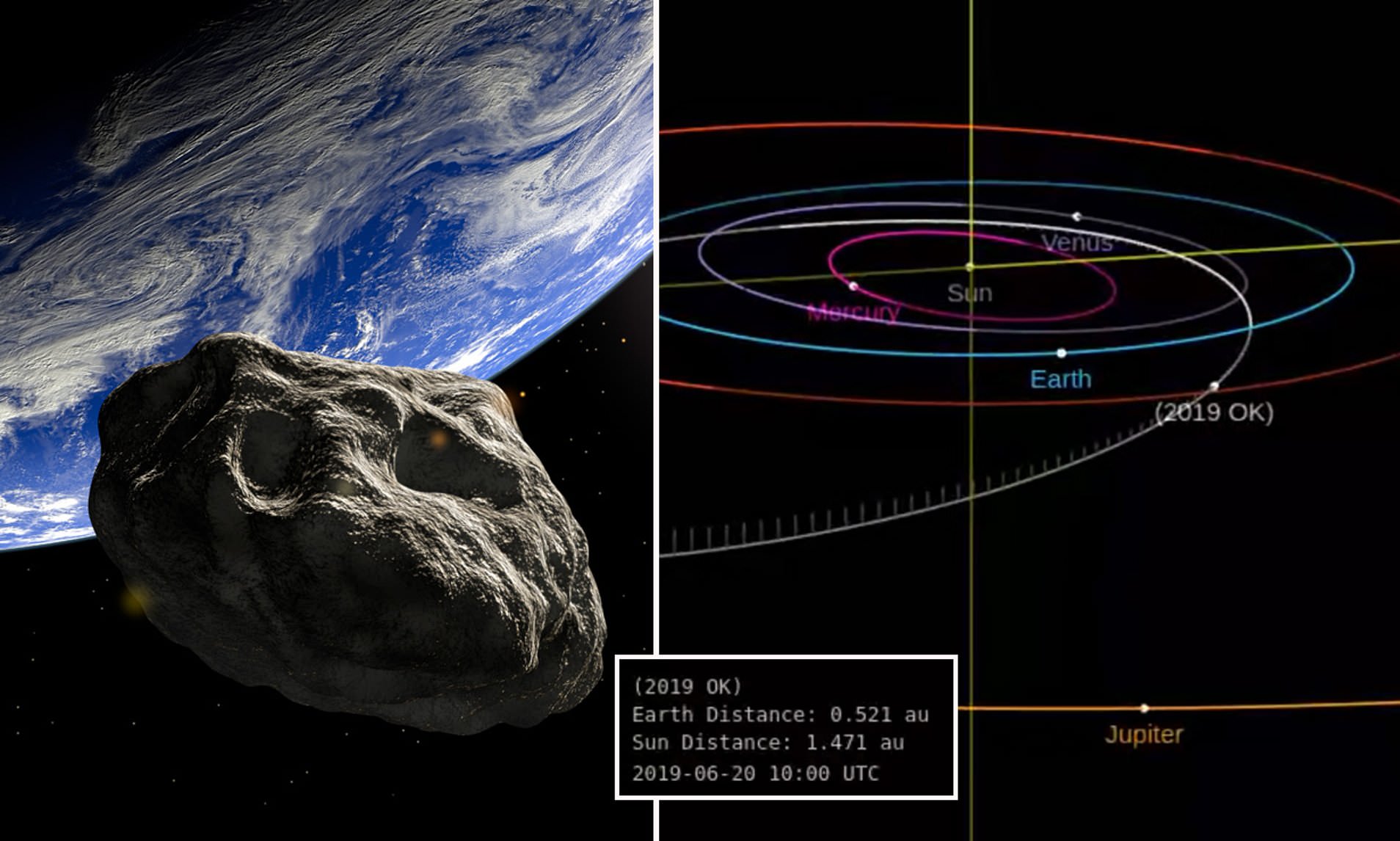On Thursday, a large asteroid called 2019 OK suddenly emerged largely on astronomers’ radar, passing close to the Earth dangerously. It was big, estimated to be between 57 and 130m wide, about the size of a large airplane and came within 73,000 km of the planet, a quarter of the distance between the Earth and the Moon.
How Astronomers Missed the Massive Asteroid That Just Whizzed Past Earth
Astronomers, who meticulously track all objects that come close to Earth, to our surprise completely missed this until it was way too close.
Michael Brown, an associate professor in astronomy at Monash University in Australia said that if the asteroid had actually collided with Earth, the crash would have caused devastating damage.
2019 OK was detected independently by astronomers in the US and Brazil last week and later confirmed by NASA. Several asteroids pass between the Earth and Moon multiple times each year, but they’re usually very small and pose no threat. Even if they are on a path to slam into the Earth, they would incinerate in the atmosphere. However, this was the first time since they started being tracked that astronomers missed such a large asteroid.
Three other asteroids whizzed past Earth Thursday, posing no danger. Ominously, as Australian National University astronomer Brad Tucker told the Sydney Morning Herald, maybe many such rocks of this size fly very close past Earth and we just don’t detect them.
There are various reasons for the asteroid becoming undetectable. Asteroids with the size of 2019 OK are hard to detect and track, unless they travel slowly and steadily within the range of detection, while 2019 OK was travelling far too quickly for astronomers to notice something so small. It was moving at a speed of 24 kilometres per second while asteroids near Earth typically move at average speeds ranging between 5 and 17 kilometres per second.
The asteroid also had a highly elongated orbit, stretching all the way from the vicinity of Venus to Mars. This means that it isn’t near the Earth for too long, and has thus evaded human detection in the past.
Lastly, the asteroid was coming towards Earth from the direction of the Sun that made it extremely hard to visually identify it.
According to the statement of Swinburne University astronomer Alan Duffy, “It would have hit with over 30 times the energy of the atomic blast at Hiroshima.”
The Tunguska event that occurred in 1908, where an entire Siberian forest was flattened, was caused by an asteroid of comparable size.

Leave a Reply